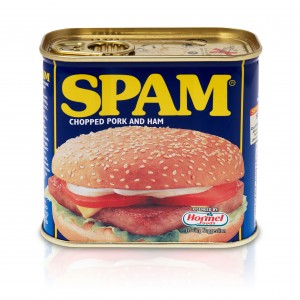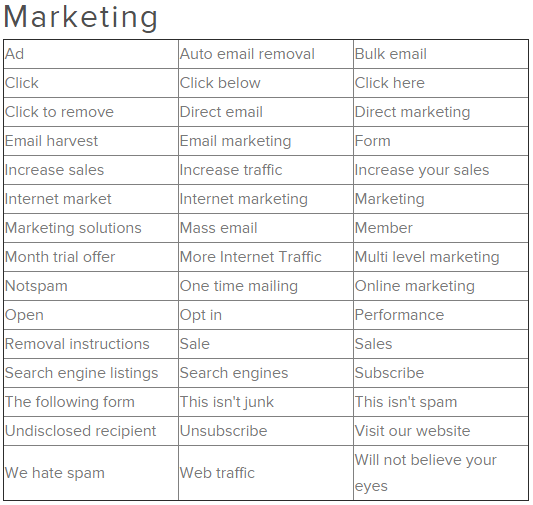The dos and don'ts of email marketing
Email marketing is probably one of the best forms of inbound marketing out there, and it has a proven track record. First, you need to build up your email list by generating leads with your website. You should offer resourceful content or incentives for people to sign up for your newsletter or to receive timely special promotions and discounts. Here are the best practices you can follow for email marketing success.
What to do with your email marketing

- "Scrub" your lists for accuracy. You want to make sure that your users put in their information correctly. Maybe a user put in their last name in the first name box, and when you send them an email it will say "Hello Johnson." Make sure that the information you have is right so you don't look unprofessional.
- Personalize the email as best you can. You can use custom fields to fill in information about your subscribers, like their name, job title, company they work for, where they live, etc. When you include the first name of the recipient in the subject line it can help to increase your open rate by 23%.
- Create nice responsive templates. 66% of emails are now opened on mobile devices like smartphones and tablets. This trend is up from about 65% in 2013 and will only continue to grow. Therefore, your templates should be clean, easy to read and navigate, and use clear call-to-action buttons to help guide readers where you want them to go.
- Keep emails short, sweet, and to the point. People get a ton of emails, so if they see a really long and drawn out email they may not read it all. It is estimated that business-related emails will grow from about 113 a day in 2015 to 129 emails daily in 2019.
- For retailers, use visuals to attract your reader's eye. People love to see visuals in combination with the use of text. Sure, some of your subscribers may only get text emails so this may not work for them, but the majority of email platforms support HTML and visuals. Mix it up by using videos and images in your email campaigns. Canva is a great tool to easily create awesome headers, which we use at the head of our blog posts.
- For business-to-business, get your clients to do video testimonials. Businesses want to see how you helped other companies because it shows proof that you can do what you say you can, and help businesses increase their revenue. They also get an idea of how satisfied others are with your customer service, and that you take the time to get to know your clients.
- Find your customer's pain points or weaknesses and offer them solutions. When you can help someone out with a problem they have, they will be more inclined to talk with you and see what you have to offer.
- Have a good, compelling headline. Your headline is what is going to catch the recipient's attention, especially when it is personalized, useful to them, specific, or has an urgent message.
- Always use an unsubscribe link at the bottom of your emails and actually unsubscribe readers that click it. Using a service, this can be done automatically, but if you're doing it manually make sure you remove them from your list before you send another email. Legally you have 10 business days to remove them, but if you happen to send another email a week later and they get it, it will only make them more annoyed with your company.
- Always link to the content on your site from the email - not just in the call-to-action, but in the text and images as well, as people are likely to click on any of them.
- Track your open rates and click-throughs for your campaigns to see what is working. What kind of subject line seems to be working the best? Which of your links are being clicked the most: visuals, text, calls-to-action?
- Also track your unsubscribes and bounce rates. Clean your list of bad emails and try to figure out why people were unsubscribing to certain emails.
- Reach out to past customers or clients with your email marketing as a gentle reminder of what you have accomplished and what you're doing better now. You never know if it could bring back another customer.
- Include your email signature so that people can easily get your contact and social information. With the rise of social media, often the best customer service comes online.
- Test your emails before sending them out. Create some accounts on Yahoo, Gmail, Outlook, Live, etc., or use your personal ones and send them there to make sure everything looks good and all the links work properly. Make sure you also look at them on a mobile device, as most people will be opening them from there.
What not to do with your email marketing

- Probably the biggest no-no in email marketing is spamming. It's just not worth giving your company a bad name. People will post your spam online and may leave bad reviews, which can show up in Google results when people search your company name.
- Don't make it obvious that you are using a fill-in word template. This goes along with both scrubbing your lists and creating your templates. If you didn't scrub your list properly and there's no first name in the field for an email, your subscriber could get an email that says "Hey %%First name%%,". That just doesn't look professional. Other times, a reader may be addressed as "Hey John," with their name bold or in a different typeface, making it obvious that it was automatically filled in.
- Be careful with the formatting of your email. You don't want to look like you're yelling because your message uses all capital letters or a bunch of exclamation points. Don't go overboard with colors, either, because it could turn people off. Keep everything simple in tone and easy on the eyes.
- If you copy your message in from Microsoft Word or any other word processing program, be sure that it didn't mess up the layout or copy in code that you don't want displayed.
- Don't phish or use false information in your "from" or "reply-to" headers. This info must be from the person or company that is sending the email.
- Don't purchase a list of emails, even if the seller says they are opted in. These sellers email the list asking if they want to opt-in to receive deals from third parties and then they sell those lists to you. Most platforms won't allow you to send emails to lists that you bought, so make sure your list is from people that have signed up expressly to get content from you.
- Never use the carbon copy or "cc:" option when sending emails to your readers. No one wants their email exposed to the other people on your list.
- Don't be constantly sending out sales pitches in your email. Give the reader something resourceful that can help them and gain their trust.
- Don't send too many emails. Nobody wants an email from you every single day. Can you really provide that much resourceful and helpful information on a daily basis? Maybe. Should you bother them that much? Never.
- Don't have inconsistent design between your email and landing page. If you've ever clicked on a link and gone to a completely different place than you thought it was, you'll know how irritating this can be. So keep the email and landing page consistent to increase your conversions.
- Don't use a "no-reply" email address. If people want to respond to the email to contact you, make it simple for them to do so.
- Don't try to trick readers with a catchy but irrelevant subject title. The subject line should be relevant to what the email is all about. You still want to make the subject line persuasive for them to open, just make sure it doesn't include any spam triggers and it relates to the content.
Finally, here is a list of spam trigger words from Hubspot to not use in your marketing campaigns.

This may be a lot of do's and don'ts for your email marketing campaigns, but it should help you to increase your conversion rates and revenue. If you don't have the time, designers, or know-how to do all of these, then you may want to look for an email marketing service that can help you out.
